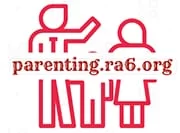Car Seat Safety: Ensuring the Protection of Our Youngest Passengers
When it comes to safeguarding our children, few things are more critical than ensuring their safety while on the road. Car seat safety is not just a recommendation; it’s a vital necessity that can save lives. Whether you’re a new parent or a seasoned caregiver, understanding the importance of car seat safety and staying informed about the best practices is essential.
This article will guide you through the key aspects of car seat safety, from newborns to toddlers, and provide you with the knowledge you need to keep your little ones secure.

Table of Contents
Understanding the Basics of Car Seat Safety

Car seats are designed to protect children during vehicle collisions by providing appropriate restraint and reducing the risk of injury. However, the effectiveness of a car seat depends greatly on the right choice, proper installation, and correct usage. Before diving into the specifics for different age groups, let’s explore some general principles of car seat safety that apply to all children.
- Always refer to the car seat’s manual and your vehicle’s owner manual for installation instructions.
- Ensure that the car seat is appropriate for your child’s age, height, and weight.
- The car seat should be installed securely, with no more than an inch of movement side-to-side or front-to-back when pulled at the belt path.
- Keep children in the rear seats of the vehicle, as it’s the safest place in the event of a crash.
- Ensure the harness is snug against the child’s body, with the chest clip placed at armpit level.
Car Seat for Newborn Safety

From the moment you leave the hospital, your newborn needs to be protected in a car seat. The best car seat for newborn safety is a rear-facing seat, which provides the most support for their delicate head, neck, and spine. It’s recommended that newborns remain in a rear-facing seat until they reach the highest weight or height allowed by their car seat’s manufacturer.
- Select a car seat that’s designed specifically for infants and has a good safety rating.
- Ensure the newborn’s head does not slump forward, which can obstruct their airway.
- Use inserts provided by the car seat’s manufacturer for additional support if necessary.
Infants Car Seat Safety

As your child grows, you’ll need to adjust their car seat accordingly to maintain optimal safety. Infants should stay in rear-facing seats for as long as possible, transitioning to a convertible or all-in-one seat that can continue to be used rear-facing until they outgrow it. These transitions are not based on age alone but on the specific growth milestones of your child relative to the car seat’s limitations.
- Monitor your infant’s height and weight to determine when it’s time to adjust the car seat or switch to a larger one.
- Be aware that thick clothing and outerwear can prevent a snug harness fit; use car seat covers or blankets over the harness instead.
- Regularly check the car seat for any signs of wear and tear or recalls.
Car Seat Safety for Toddlers

Toddlers present a new set of challenges when it comes to car seat safety. As they grow, they’ll eventually transition from rear-facing to forward-facing seats with harnesses. It’s important to delay this transition until they reach the rear-facing limits of their seats. Once in a forward-facing seat, they should remain there until they exceed the seat’s height or weight limits.
- Use a tether strap with your forward-facing car seat to provide additional stability.
- Ensure the harness fits snugly, and the chest clip is at armpit level even as your toddler grows.
- Resist the urge to switch to a booster seat too early; the harness provides essential protection.
Safety Ratings of Car Seats

When selecting a car seat, safety ratings are a critical factor to consider. Organizations like the National Highway Traffic Safety Administration (NHTSA) provide ratings based on ease of use, but it’s essential to look for independent crash test results as well. Consumer organizations and child passenger safety groups often release these results to help parents make informed decisions.
- Look for car seats that have been tested and rated for safety by reputable organizations.
- Read reviews and consumer reports that detail the performance of car seats in crash tests.
- Check for additional safety features such as side-impact protection, five-point harnesses, and energy-absorbing foam.
Frequently Asked Questions

What age should my child be in a car seat?
Children should use a car seat from birth until they are tall enough to properly fit an adult seat belt. The age can vary, but it’s usually up to around 12 years old. You should also follow the height and weight limits specified by the car seat manufacturer.
How do I know if my car seat is installed correctly?
The car seat should not move side-to-side or front-to-back more than 1 inch when you pull at the belt path. Make sure you’ve read the instructions that came with the car seat and your vehicle’s owner manual on car seat installation. It’s also a good idea to have your installation checked by a certified child passenger safety technician.
Can I use a second-hand car seat?
Using a second-hand car seat is not recommended unless you know its full history. It should not be used if it’s expired, has been in a crash, or is missing parts or instructions. Always check for recalls before using a second-hand car seat.
How long can my child stay in a rear-facing car seat?
Keep your child in a rear-facing car seat for as long as possible, until they reach the top height or weight limit allowed by your car seat’s manufacturer. This is usually until at least age 2, but many can stay rear-facing until ages 3 or 4.
When can my child switch to a booster seat?
Your child can switch to a booster seat once they outgrow the forward-facing car seat with a harness. This is typically when they have reached the highest weight or height allowed by the car seat manufacturer. Most children are ready for a booster seat around 5 to 7 years old.
Does the car seat need to be in the middle of the back seat?
The middle of the back seat is generally the safest place because it is the furthest from any potential impact. However, the most important thing is that the car seat is installed correctly. If you cannot get a tight fit in the middle, then install the seat in a position where you can.
What should I do with my car seat after an accident?
After a moderate or severe crash, car seats usually need to be replaced. However, after a minor crash, it may still be safe to use. Check the car seat manual and NHTSA’s guidelines on when to replace a seat after a crash.
How tight should the harness be on my child in the car seat?
The harness should be snug enough that you cannot pinch any extra material on the straps at the child’s shoulder. The chest clip should be at armpit level to hold the harness in the correct position.
Can I put my child in a car seat with a winter coat on?
No, bulky clothing, including winter coats, can prevent a snug harness fit. Instead, dress your child in thin layers and place a coat or blanket over the harness to keep them warm.
When is it okay to let my child sit in the front seat?
Children are safest in the back seat, ideally until at least age 13. If you must place a child in the front seat, make sure the car seat is installed correctly, the vehicle’s passenger airbag is off, and the seat is moved as far back as possible.
Final Thoughts on Car Seat Safety

Car seat safety is a journey that evolves with your child’s development. By staying informed about the latest recommendations, safety ratings, and best practices, you can ensure that your child remains protected at every stage. Remember to register your car seat with the manufacturer to receive safety updates and recall notifications, and consider having your car seat installation checked by a certified child passenger safety technician.
By prioritizing car seat safety, you are taking a crucial step in protecting your child’s life on the road. It’s a responsibility that cannot be taken lightly, but with the right knowledge and attention to detail, you can drive with peace of mind, knowing that your most precious cargo is secure.
Ultimately, the key takeaways for car seat safety are to choose the right seat for your child’s age and size, ensure proper installation, and use the seat correctly every time you travel. By doing so, you’re not just following the law or guidelines – you’re embracing a commitment to the well-being and safety of your children.
Originally posted 2023-06-16 09:40:45.
